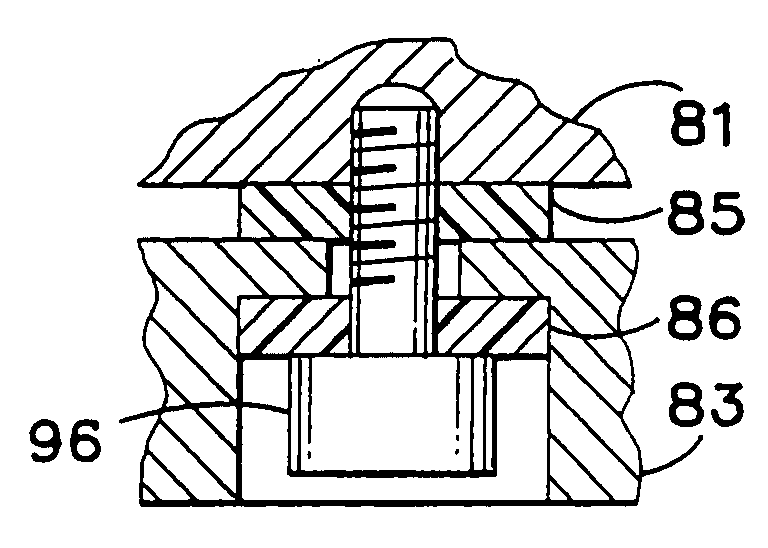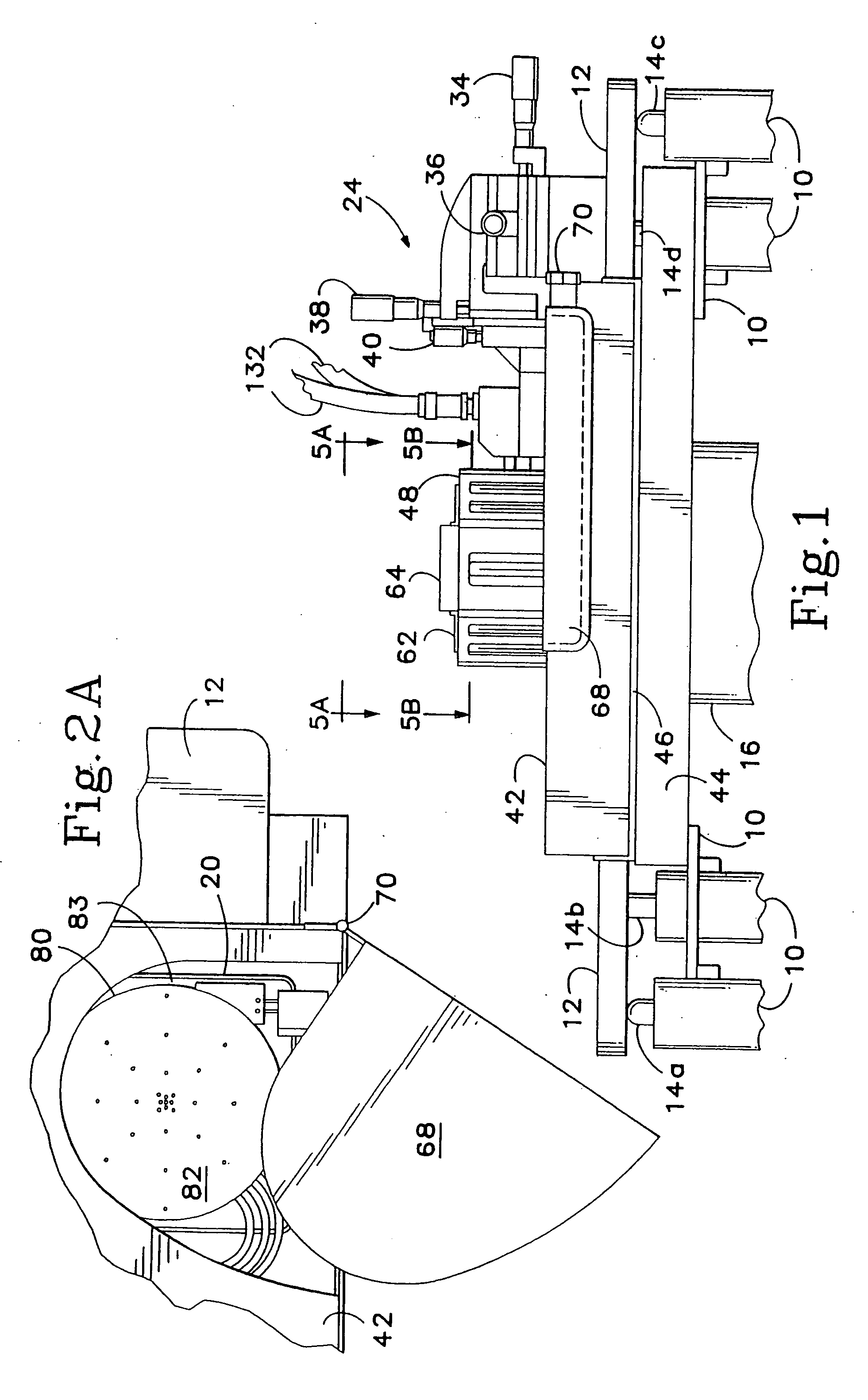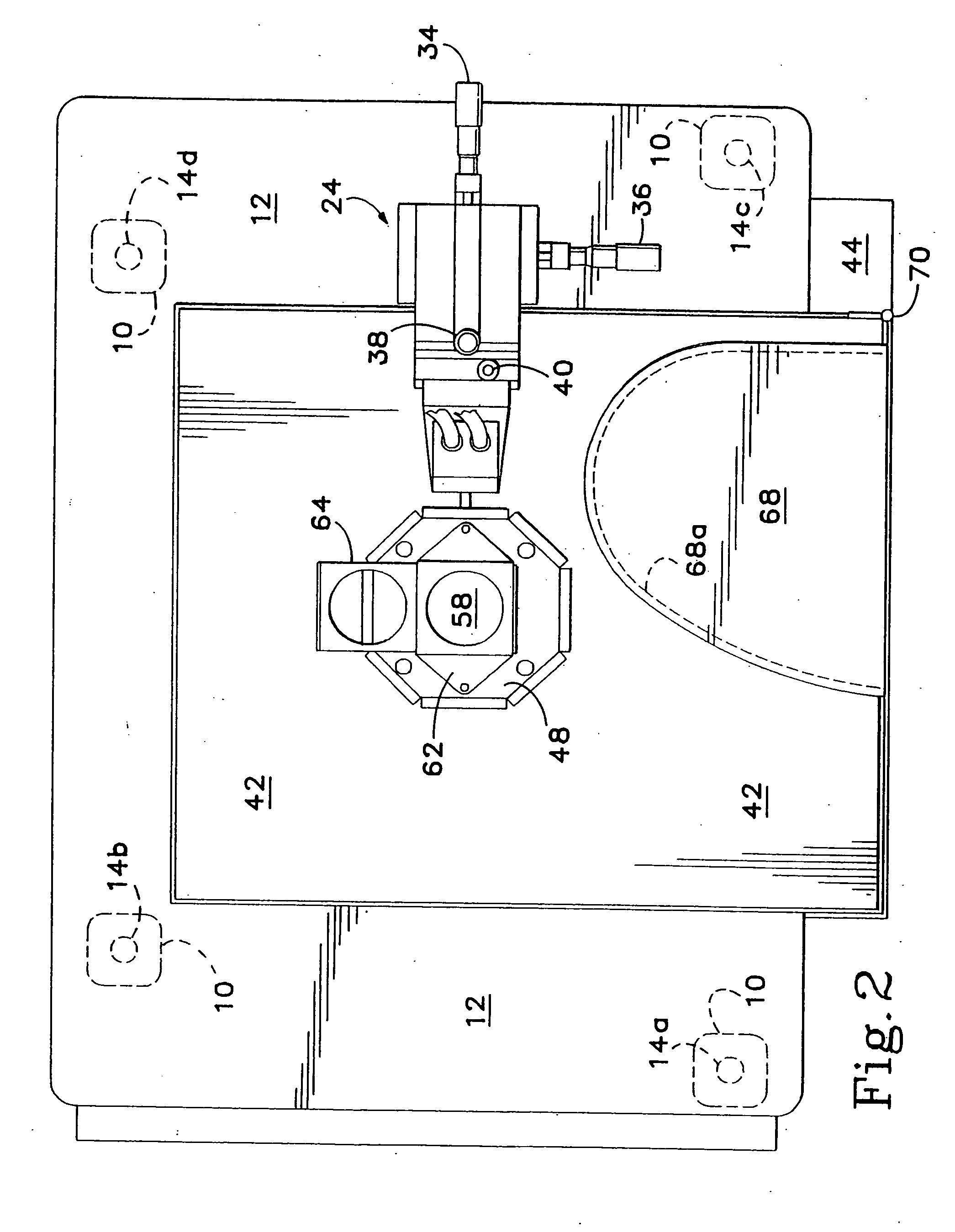Wafer probe station having a skirting component
a probe station and component technology, applied in the field of probe stations, can solve the problems of time-consuming and laborious custom set-up of such probe stations required for guarding and kelvin connection procedures, significant time-consuming alteration of such stations, and limited effectiveness, so as to reduce settling time, reduce energy transfer, and increase sensitivity
- Summary
- Abstract
- Description
- Claims
- Application Information
AI Technical Summary
Benefits of technology
Problems solved by technology
Method used
Image
Examples
Embodiment Construction
General Arrangement of Probe Station
[0041] With reference to FIGS. 1, 2 and 3, an exemplary embodiment of the probe station of the present invention comprises a base 10 (shown partially) which supports a platen 12 through a number of jacks 14a, 14b, 14c, 14d which selectively raise and lower the platen vertically relative to the base by a small increment (approximately one-tenth of an inch) for purposes to be described hereafter. Also supported by the base 10 of the probe station is a motorized positioner 16 having a rectangular plunger 18 which supports a movable chuck assembly 20 for supporting a wafer or other test device. The chuck assembly 20 passes freely through a large aperture 22 in the platen 12 which permits the chuck assembly to be moved independently of the platen by the positioner 16 along X, Y and Z axes, i.e. horizontally along two mutually-perpendicular axes X and Y, and vertically along the Z axis. Likewise, the platen 12, when moved vertically by the jacks 14, mo...
PUM
 Login to View More
Login to View More Abstract
Description
Claims
Application Information
 Login to View More
Login to View More - R&D
- Intellectual Property
- Life Sciences
- Materials
- Tech Scout
- Unparalleled Data Quality
- Higher Quality Content
- 60% Fewer Hallucinations
Browse by: Latest US Patents, China's latest patents, Technical Efficacy Thesaurus, Application Domain, Technology Topic, Popular Technical Reports.
© 2025 PatSnap. All rights reserved.Legal|Privacy policy|Modern Slavery Act Transparency Statement|Sitemap|About US| Contact US: help@patsnap.com



